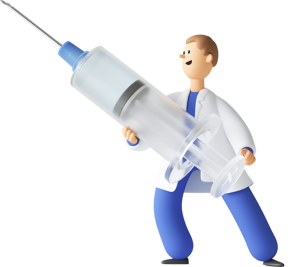In Vitro Fertilization
In-vitro fertilization (IVF) is the most effective fertility treatment available today, especially for older women, those with damaged fallopian tubes, and also for couples facing male factor infertility.
In Vitro Fertilization
In-vitro fertilization (IVF) is the most effective fertility treatment available today, especially for older women, those with damaged fallopian tubes, and also for couples facing male factor infertility.

IVF Overview
At Anaahita Fertility Clinic, our fertility doctor has a long history of successful pregnancies and live births. We’ve got the experience, facilities, technology, and wisdom to expertly guide you through the IVF process to a successful outcome in the shortest time possible. We have extensive experience with challenging and complicated cases and offer unparalleled support and the highest quality care during this challenging time. Our goal is your fertility success.
IVF Overview
At Anaahita Fertility Clinic, our fertility doctor has a long history of successful pregnancies and live births. We’ve got the experience, facilities, technology, and wisdom to expertly guide you through the IVF process to a successful outcome in the shortest time possible. We have extensive experience with challenging and complicated cases and offer unparalleled support and the highest quality care during this challenging time. Our goal is your fertility success.
IVF Overview
At Reproductive Health and Wellness Center, our fertility doctor has a long history of successful pregnancies and live births. We’ve got the experience, facilities, technology and wisdom to expertly guide you through the IVF process to a successful outcome in the shortest time possible. We have extensive experience with challenging and complicated cases, and offer unparalleled support and the highest quality care during this challenging time. Our goal is your fertility success.


IVF Treatment
Sometimes the fertility doctor can treat infertility with ovulation induction, intrauterine insemination (IUI), or surgery. For those who don’t get pregnant with these first-line treatments, or for those who aren’t good candidates for these treatments, In-vitro fertilization (IVF) can be the best choice. In fact, IVF is the most effective fertility treatment available today. IVF is up to 5 times more effective at resulting in a successful pregnancy than intrauterine insemination (IUI). Some common indications for IVF include age-related infertility, damaged fallopian tubes, endometriosis, unexplained infertility, male factor infertility, genetic testing for pregnancy loss or inheritable genetic diseases, and family balancing. If you’ve already explored fertility medications and other first-line infertility treatments without success, IVF may be the logical next step for you.

- The first step to IVF is ovarian stimulation. We use hormonal medications to stimulate the ovaries to grow eggs. The medications are pills and injections and they can be used daily for approximately 10 days. Over the course of those 10 days, you will be coming into the IVF center every 2 or 3 days for ultrasounds and hormone measurements. This is so we can monitor how you are responding, adjust the medications as necessary, and add medications when appropriate to prevent you from ovulating.
- The next step is the IVF egg retrieval. While you are asleep and under anesthesia, a small needle is inserted into the ovaries to remove the eggs from your body. Typically this procedure takes 15 minutes and because you are asleep, you won’t remember anything. While the retrieval is occurring, an embryologist is there to look at and count the eggs.
- The third step is fertilization. Sperm is collected and mixed with the eggs in the IVF lab. If IVF with Intro-Cytoplasmic Sperm Injection (ICSI) is used, the embryologist will inject a single, healthy sperm into each egg to increase the chances of successful fertilization. The fertilized eggs are nurtured in the lab for 5 days.
- The fourth step is embryo transfer. Once the embryos are mature and the uterine lining is ready, the embryo(s) is gently placed at the top of the uterus using a very small catheter. The embryo transfer is always done under ultrasound guidance. Embryos may be genetically tested (preimplantation genetic testing) prior to being transferred and they may also be frozen for use in a future IVF cycle. Genetic testing helps us to identify the very best embryos for transfer. Genetic testing also helps identify any genetic or chromosomal defects prior to implantation. This reduces the chance of miscarriage and increases success rates for live births.

